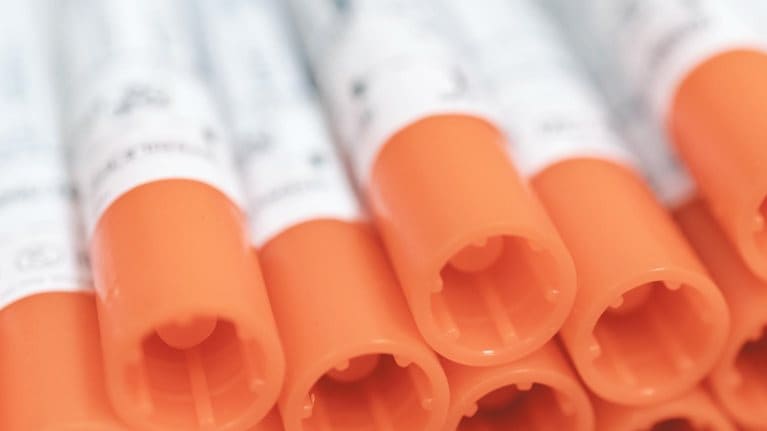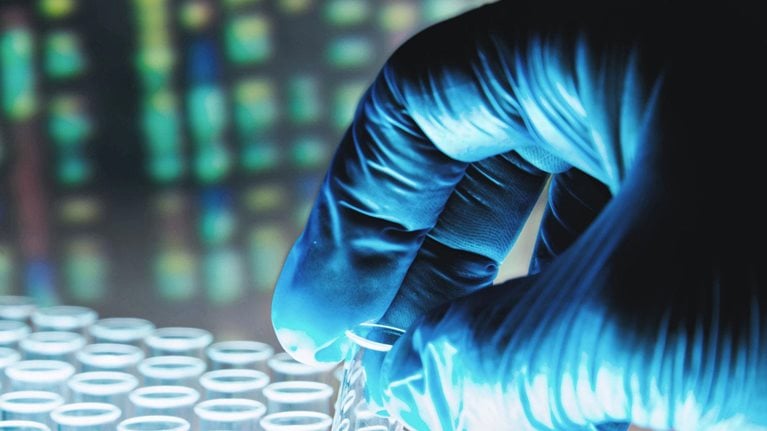Vaccines are considered to be our best chance for beating COVID-19, and many governments are counting on them to enable economic recovery. But to innoculate people worldwide as soon as vaccines are proven will require the pharmaceutical industry to ramp up quickly to unprecedented volumes of supply. The available global production capacity will be critical to that capability. And technology transfer—moving the knowledge about and the ability to produce a vaccine from development to manufacturing—will determine how fast it happens.
But tech transfer is as much a craft as a science. And it hasn’t usually been on the critical path to production, so it comprises an underappreciated set of capabilities. To ensure adequate and timely supplies of COVID-19 vaccines and treatments, global institutions and pharma companies must collaborate to make tech transfer an industrialized, at-scale process—before we need it.
Vaccine production at scale will depend on tech transfers
Today, more than 200 COVID-19 vaccine candidates are in development. Most countries are hoping broadscale vaccination will put an end to the pandemic. Consequently, any successful vaccine will face a problem: it will immediately be out of stock, since the whole world will want access to it right away. The picture may be similar for an effective therapeutic, especially for prophylactic use or for treatment of mild to moderate disease, where demand volumes also will be high, whether for a repurposed existing treatment or a new compound.
As successful compounds emerge from development, ample manufacturing capacity and a rapid scale-up of production will be essential. The capacity exists, and presumably governments could intervene to prioritize COVID-19 vaccines. However, rapid scale-up of production will rely on technology transfer from development to production, which has not had the same level of attention.
There will likely be several vaccines, since more than one may be successful. The billions of doses we estimate will be needed will require multiple manufacturing plants. Moreover, workstreams that are typically sequential in a nonpandemic situation are being pursued in parallel. Companies are building manufacturing capacity, transferring technology, and even starting large-scale production of candidate vaccines before they have conclusive clinical data, because the economic cost of delays is so high. And because some of these vaccines will fail, manufacturers will need to ramp up even more capacity than might eventually be used, making a tremendous challenge even harder. Developers are already transferring to multiple production sites in parallel. AstraZeneca, for example, has announced it will transfer production to contract manufacturing organizations (CMOs), while Pfizer has announced it will shift legacy products at scale to CMOs to free up internal capacity for COVID-19 vaccines.
Not only will industrial-scale tech-transfer capabilities be crucial for global vaccine supply, but also tech transfer is complex and requires a large number of specialized skills. Industry and governments need to invest in these capabilities now to help the world meet the challenges in 12 to 18 months.
Why tech transfers are difficult
The safety, quality, and efficacy requirements of life-saving but potentially toxic pharmaceuticals put high demands on production. Producing complex pharmaceuticals is not just a matter of building the required production line or hardware. It also involves a complex (and often finicky) manufacturing process, a large team of experts, a lot of time, many detailed steps, and the right regulatory registrations—and all of this against the highest quality standards.
The production process for vaccines, as for any biopharmaceutical, can be hard to control for many reasons (Exhibit 1). The products are grown in live microorganisms or are parts of live microorganisms. The variability of biological processes needs careful calibration, validation, and constant tuning to ensure consistency.


This, in turn, requires a complicated dance of multiple experts in manufacturing, quality, regulation, engineering, and logistics—also, trainers, lab technicians, smart builders, maintenance crews, scientists, and capable leaders. An average transfer requires six to nine full-time equivalent hours (FTEs) from a dozen disciplines. If we have ten to 20 vaccine candidates with four to eight sites per candidate, we will need 300 to 1,200 specialist FTEs. Owing to the discipline split, this might amount to as many as 2,000 to 6,000 professionals.
Typically, the tech-transfer process is invisible to patients and even to many professionals in the industry. Clinical trials in pharma can take between five and eight years. Tech-transfer times for sterile dosage forms, such as injectable vaccines, range from 18 to more than 30 months (Exhibit 2). Because this timeline is shorter than the average clinical-trial length, pharmaceutical engineers can work carefully and diligently on the transfer process, knowing it is not on the critical path.
That will not be true for a COVID-19 vaccine or therapeutic. Society will demand the shortest possible timeline. Once a successful vaccine is confirmed, manufacturers will be under extreme pressure, and tech transfer will need to happen as soon as possible, within a few months.
The duration of a tech transfer is driven by eight main steps with eight functions at two sites, often also involving equipment and material suppliers. Each of the steps contains around 20 to 30 separate activities, so individual actions number in the hundreds. The wide variety of functions involved is spread across the donor site, the receiving site, and sometimes also a headquarters site (Exhibit 3).

In normal times, tech transfers can suffer from a lack of attention during routine production. They can receive little priority at donor sites and often are not top of mind at receiving sites. In the current situation, manufacturers are focused on delivering other essential vaccines or coping with the exceptional swings in production caused by lockdowns. Also, many smaller vaccine producers will be doing a tech transfer for the first time, which creates risk.
The transfer for new COVID-19 vaccines will likely involve a scale-up step, where equipment is used for the first time, placing high demand on process development and experts in manufacturing science and technology. And commercial transfers between sites often require equipment modifications and process adaptations, which add complexity.
Also, quality standards for vaccines are strict, since vaccines are administered to healthy people. Therefore, regulators require quality controls logged in a set of documents and submissions—chemistry, manufacturing, and controls (CMC)—which allow the regulators to manage whether manufacturers and developers are taking proper precautions. Creating the filing, registration, and underlying data is a labor-intensive process.

Finally, doing this between companies is even more complicated than doing it inside a single one. Transfers to an external party take on average 5.8 months longer (Exhibit 4).
Tech transfer today is a non-industrialized process requiring a lot of tradecraft, but we can still reduce its timeline.
How to streamline transfers and shorten timelines
Critical to shortening tech-transfer timelines will be a proven set of best-in-class transfer practices (Exhibit 5), which we have collated from benchmarks and comparisons across the pharmaceutical industry. They start with a detailed best-practice process map. Fast tech transfer requires an unambiguous sequence of events, using best-practice tools. Also, we see companies that do it fastest use a control-tower approach, where all activities are visible and a clear meeting cascade ensures fast communication and escalation of issues for leadership attention. Finally, the team involved will be challenged to deliver in a fashion they have never done before—with an industrial mindset for tech transfer, as well as the right capabilities:
- Agile ways of working, embedded in a structure rigorously focused on performance
- Nonhierarchical and fast decision making, prioritizing effective and efficient solutions
- Early, risk-tolerant investment and fast capacity ramp-up with the flexibility to adapt to negative vaccine candidate outcomes
- A high level of expertise open to challenge from interdisciplinary team members
- Ability to be simultaneously science and technology driven as well as patient focused
- Treatment of quality requirements as enablers rather than barriers

In some ways, the pandemic situation is similar to wartime. Regular team structures may not be fast and effective enough. Companies might consider setting up nerve centers with access to senior company leadership, such as divisional CEOs, to resolve bottlenecks and make quick decisions.
The collective knowledge of the pharmaceutical industry should be enough to resolve any issue. However, communications between functions within a company and especially between companies have historically not been smooth. A common process and vocabulary will likely be needed if we are to improve them sufficiently to respond quickly to the pandemic.
In normal times, the fastest transfers have taken as little as six months under exceptional circumstances, such as having to restart sterile production lines after microbial contamination or remediation after a regulator closed down a site. Also, generics companies have performed transfers at scale during site divestitures or large portfolio acquisitions—as many as 50 products in 24 months. And contract manufacturers are champions at insourcing products, since that is a key enabler of their business model.
The industry has therefore proven that it can act at amazing speed, and we believe it can achieve best-in-class transfer times of eight to 11 months, 60 to 70 percent more quickly than usual, at scale. With regulatory flexibility that has already been announced, it may be possible in six. Every month taken off the timeline will save countless lives and likely at least tens of billions of dollars for the global economy. But to do it for the global economy, rather than piecemeal, we need common mechanisms that will enable us to learn from each other and work together.
The way ahead
No single player has all the answers. A professional institution, such as the International Society of Pharmaceutical Engineering (ISPE), or a philanthropic organization, like the Global Alliance for Vaccines and Immunizations (GAVI) or the Coalition for Epidemic Preparedness Innovations (CEPI), may be best positioned to orchestrate the collaboration needed. These organizations can play an important role in developing and sharing best-practice playbooks. And they can organize professional knowledge networks able to act at the speed of COVID-19.
One solution may be to create a team of ten to 20 professionals and organize a hackathon based on existing process maps to determine best practice for tech transfer, to create the knowledge-management infrastructure, and to apply digital and advanced analytics tools to transfers. In this way, we can respond quickly to any technical challenge and, in doing so, speed up transfers, enable faster supply of critical medicines, and help save lives and livelihoods.

